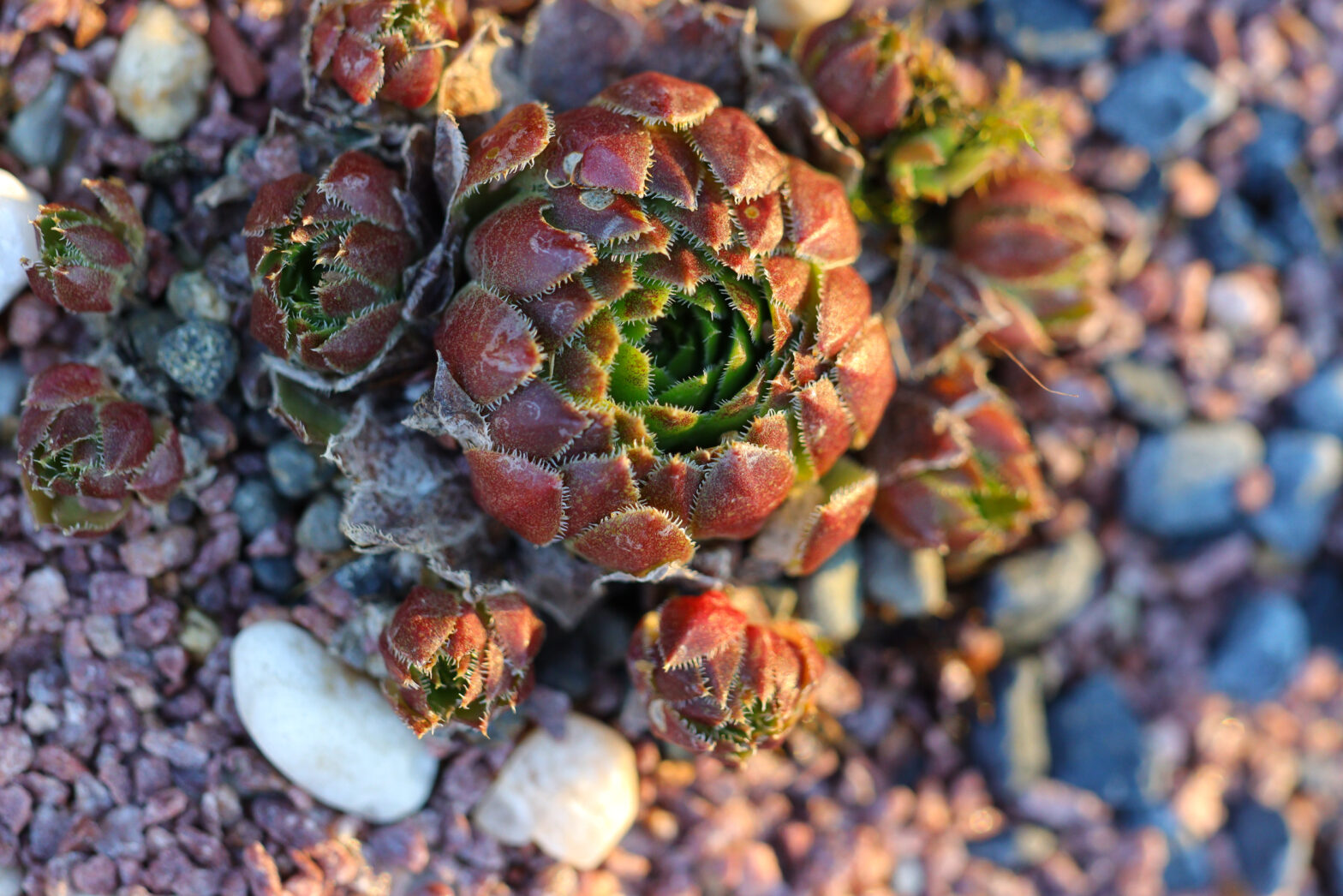I heard Kelly Dodson on a podcast last year, who along with his wife Sue Milliken runs Far Reaches Farm nursery. Of course, this led to a virtual visit to his website. One thing led to another and in October I received a box full of amazing plants, all lovingly wrapped and in wonderful condition. One of the most unassuming of the bunch is in some ways the most amazing.
Hens and chicks are hardy succulent plants, grown in gardens and as houseplants, known as nearly indestructible. So why am I focusing on this plant? Jovibarba has bounced back and forth from Sempervivum to its own genus. It is largely defined by how the baby chick plants develop. They form as rollers, only loosely attached to the mother hen plant. They eventually detach and roll to a new and hopefully promising spot to continue life on their own.
The special thing about this plant is its incredible provenance. It was gifted to Kelly from John Grimshaw, Director of The Yorkshire Arboretum. John Grimshaw got it from the garden of Linnaeus! Yes, the Carl Linnaeus who developed the system of binomial nomenclature, inventing modern taxonomy. Using his own classification system, this plant is most likely Jovibarba globifera subspecies allionii, endemic to Europe.
This is one of around forty species of his original plants that have survived on his Hammarby property near Uppsala, Sweden. There is speculation he grew it on his roofs, which even now are covered with turf. He certainly would have been sensitive to the risk of fire since the large natural history collection assembled by Linnaeus and his colleagues at the university was threatened by fire in 1766, and the garden partly destroyed. This led him to move his own collections to Hammarby.
Back in the 1700’s, people planted succulents on their roofs, since they were supposed to protect against lightning, not to mention the threat to turf and thatch from cooking fires. Succulents are fire resistant, and this tradition continues. Beatrix Potter planted Sempervivum on her roof, and to this day some European houses have assorted succulents planted on their homes.
Since I have a shingle roof that seemed a poor location, so it is now happily settled in my garden. It has braved an autumn and winter of cold and snow, which are probably nothing compared to the bitter Swedish winters where its ancestors first lived. Gardeners for years have relied on passalong plants to form a living bridge between generations. For me this is the ultimate heirloom plant, coming from the garden of Linnaeus.
